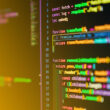How to Develop An IoT App? [Tips from Experts & Mistakes]

IoT application development begins with a clear understanding of the project’s objectives and requirements. Kostiantyn Oliynyk, an expert in IoT application development services at Webbylab, emphasizes, “Defining the problem statement and understanding user needs are fundamental in IoT app development. It lays the groundwork for creating solutions that truly address real-world challenges.”
Once objectives are established, select suitable hardware components, communication protocols, and cloud infrastructure. The choice of hardware depends on factors such as sensor types, connectivity options (Wi-Fi, Bluetooth, Zigbee, etc.), and power requirements. Compatibility and scalability considerations should guide hardware selection.
Pro tip!
Designing an intuitive user interface (UI) and user experience (UX) is crucial for user adoption and satisfaction. As noted by Oliynyk, “A seamless user experience is key in IoT applications, where simplicity and accessibility drive user engagement and adoption.”
Scalability and maintenance should also be factored into the development process. Plan for future growth by designing a flexible architecture that can accommodate additional devices and data volume without compromising performance. Regular maintenance and updates are necessary to address bugs, security vulnerabilities, and evolving user needs post-deployment.
According to IoT Analytics, the global IoT market is projected to reach $1.6 trillion by 2025, indicating significant growth opportunities in the industry.
Core IoT Hardware App Development Requirements
Hardware development is a critical aspect of IoT application development, as it forms the foundation for device connectivity and data collection.
- Begin by selecting hardware components that align with your application’s requirements and objectives. Consider factors such as sensor types (temperature, pressure, motion, etc.), connectivity options, and power consumption.
- Develop firmware or embedded software to enable communication between hardware devices and the application backend. This firmware facilitates data transmission, sensor readings, and device management functionalities. Rigorous testing is essential to ensure that hardware components function reliably and seamlessly integrate with the overall system architecture.
Implementing efficient data storage and retrieval mechanisms is crucial for optimizing performance and minimizing resource consumption. Design databases and data storage systems capable of handling large volumes of IoT-generated data efficiently. Utilize caching and indexing techniques to accelerate data access and retrieval operations.
Interesting IoT App Development Moment!
Advanced techniques such as predictive maintenance algorithms can analyze IoT data in real-time to identify potential equipment failures before they occur, reducing downtime and maintenance costs.
5 Important Tips for Successful IoT App Development
Creating a successful IoT application requires meticulous attention to detail and strategic planning. Here are six crucial tips to ensure your IoT app development project’s success:
1. Select the Right Hardware Components: Choose hardware components carefully to ensure the functionality and scalability of your IoT application. Consider factors such as sensor types, connectivity options, and power requirements. Compatibility and scalability are key factors in hardware selection.
2. Prioritize Data Security: Protecting user data is paramount in IoT app development. Implement robust encryption, authentication mechanisms, and secure data transmission protocols to safeguard sensitive information. Kostiantyn Oliynyk adds, “Data security should be ingrained in every aspect of IoT app development to ensure user trust and confidence.”
3. Focus on Seamless User Experience: Design an intuitive and user-friendly interface that enhances overall user experience. Ensure users can easily interact with the application and derive meaningful insights from IoT device data. Prioritize simplicity and accessibility in UI/UX design.
4. Design for Scalability: Plan for scalability from the outset to accommodate future growth of your IoT ecosystem. Develop a flexible architecture capable of seamlessly integrating additional devices and handling increased data volume without sacrificing performance.
5. Embrace Continuous Testing and Iteration: Conduct thorough testing throughout the development process to identify and address any issues or bugs. Adopt an iterative approach, gathering feedback from users and stakeholders to refine and improve the application continuously.
By following these important tips, you can increase the likelihood of success in your IoT app development endeavors. With careful planning, strategic execution, and a focus on user needs and data security, you can create innovative IoT solutions that deliver value and enhance user experiences.
Mistakes Made During the Development of IoT Apps
Despite the potential benefits of IoT applications, several common mistakes can derail the development process and hinder project success.
One such mistake is overlooking interoperability issues, where devices from different manufacturers or using different protocols struggle to communicate effectively. Standardizing protocols and conducting thorough compatibility testing can mitigate this risk.
Neglecting data security is another critical mistake that can have severe consequences. IoT devices often collect sensitive information, making them attractive targets for cyber attacks. Implement robust encryption, authentication mechanisms, and regular security updates to protect user data from unauthorized access or breaches.
Underestimating power consumption considerations can lead to operational challenges and reduced device lifespan. IoT devices often operate on limited battery power or in remote locations where recharging is impractical. Optimizing power usage through efficient hardware design and software algorithms is essential for prolonged device operation and user satisfaction.
According to Bain & Company, only 20% of IoT projects achieve significant scale, with common challenges including integration complexities and lack of clear business objectives.
How Much Does It Cost to Make an IoT App?
The cost of developing an IoT application varies depending on several factors, including project complexity, hardware requirements, development time, and ongoing maintenance needs. Basic IoT applications with limited features may cost between $10,000 and $50,000, primarily for software development and cloud services.
For a precise estimate tailored to your specific project requirements, it’s advisable to consult with experts. Companies like Webbylab specialize in IoT app development services and can provide accurate cost assessments based on project scope and objectives.
Final Thoughts
In conclusion, embarking on the journey of creating an IoT application demands meticulous planning, technical expertise, and a deep understanding of user needs and industry trends. By adhering to the tips provided and avoiding common pitfalls, developers can navigate the complexities of IoT app development more effectively.
Remember, success in IoT app development hinges on defining clear objectives, selecting the right hardware components, prioritizing user experience and data security, and anticipating scalability and maintenance needs. Additionally, seeking expert guidance from companies like Webbylab can provide valuable insights and accurate cost estimations tailored to your project requirements.
With the global IoT market poised for exponential growth, seizing the opportunities presented by IoT application development requires a strategic approach and a commitment to innovation. By embracing these principles, developers can create impactful IoT solutions that drive value and transform industries in the increasingly connected world.+
- Casual Connections: Unique Apps Like Pure - May 13, 2024
- Challenges and Solutions in End-to-End Testing: A Complete Breakdown - May 13, 2024
- Fix Fast: Essential JavaScript Debugging Tools - May 13, 2024








